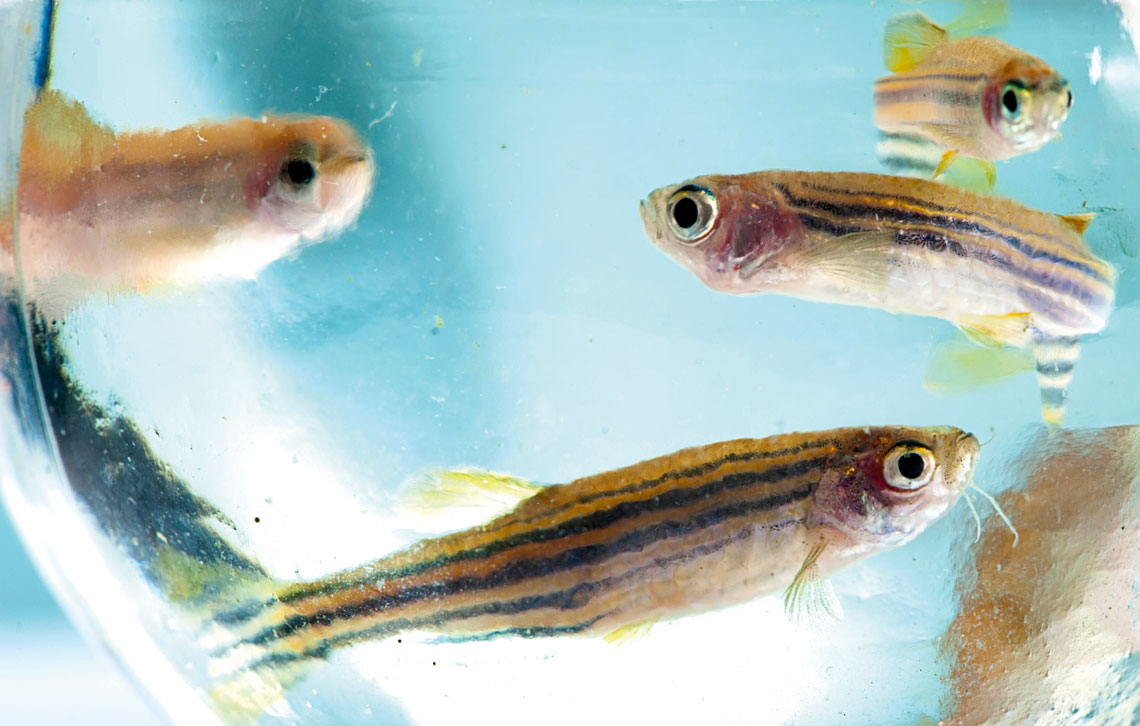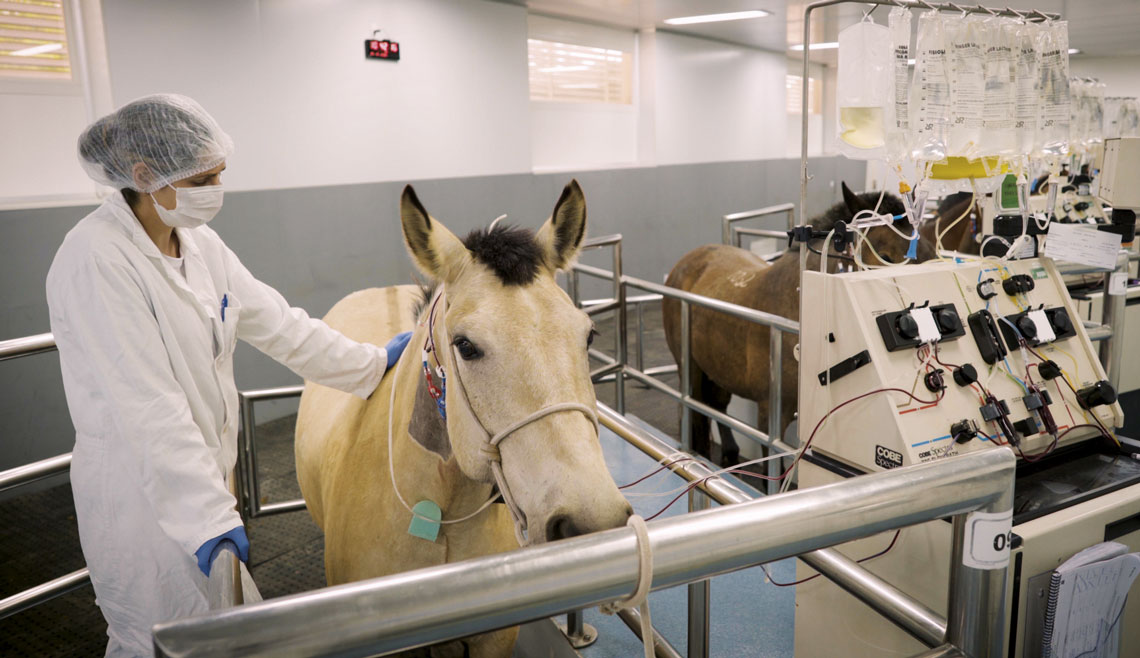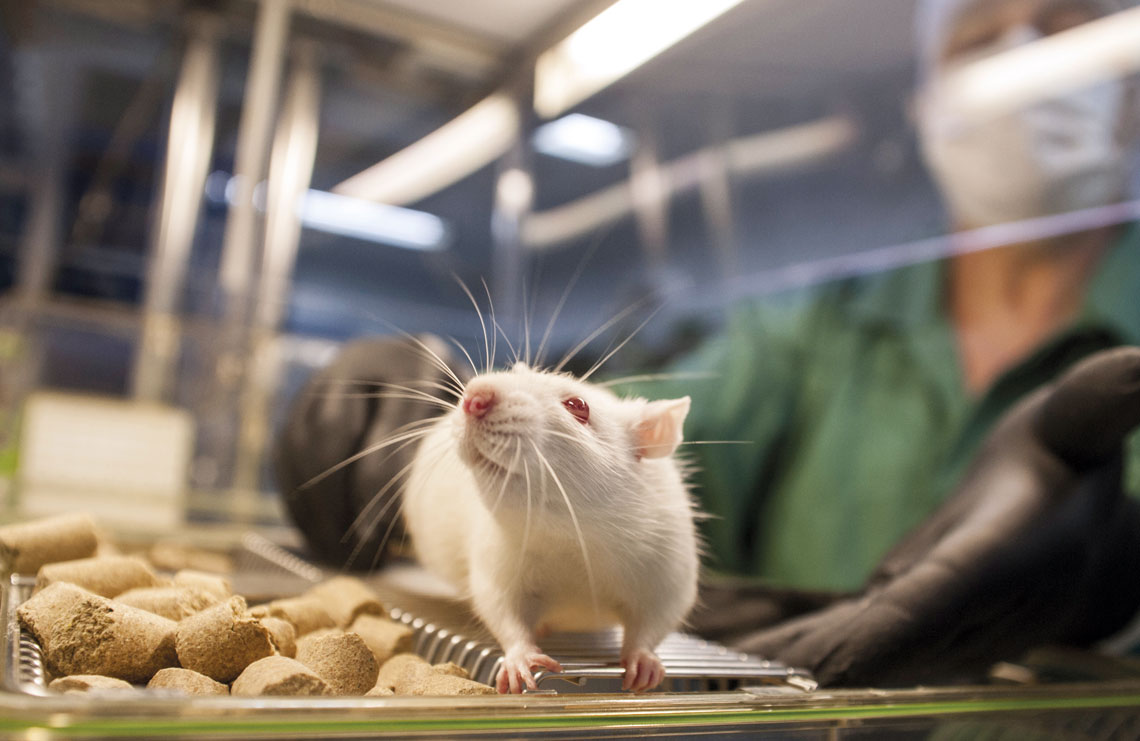The result of the efforts of over 120 researchers over the course of a decade, a 1,100-page manual with detailed guidelines about the care and handling of animals in research and teaching was released in May by the Brazilian Ministry of Science, Technology, and Innovation (MCTI), and is available on the internet in the form of an e-book. The Guia brasileiro de produção, manutenção ou utilização de animais em atividades de ensino ou pesquisa científica (Brazilian guide to production, maintenance, or use of animals in scientific teaching or research activities) contains detailed descriptions about how the structure, organization, and functioning of vivariums and other facilities should be (from the minimum space reserved for each species to the existence of exclusive areas for quarantine and euthanasia), which protocols need to be adopted to ensure well-being and reduce the pain and stress of the animals (from the level of atmospheric noise to the size of the needles used in anesthesia), or which type of training the professionals who deal with this type of testing need to receive.
The guide is composed of an introduction and 15 chapters, each with specific information about a given taxonomic group, such as rodents, rabbits, cats and dogs, nonhuman primates, ruminants, and fish, among others. The main obligations and recommendations established in each chapter, based on scientific evidence and international standards, gave rise to a dozen regulations published in May by the National Council for the Control of Animal Testing (CONCEA), a collegiate institution linked to the MCTI, responsible for creating standards for the ethical use of animals and ensuring their compliance. These resolutions, which are enforceable by law, provide a checklist for testing practices in each taxonomic group. In the case of horses, for example, it foresees that the stalls and stables need to have ventilation and natural lighting and allow the animals to have physical and visual contact with others of the same species, in order to ensure their well-being — while in pastures, it is recommended that there is a drainage system to reduce the accumulation of mud and manure. In the standards about swine, one specification is the need to physically separate the lodging and handling of genetically modified pigs to prevent cross-breeding with nontransgenic individuals. There aren’t yet any resolutions linked to the chapters for animals kept outside research institutions, such as reptiles, snakes, and free-living wild animals. As a result of their characteristics, it is not possible to standardize care that covers all of the diversity, therefore the resolutions shall include the content of the chapters, without checklists.

Léo Ramos Chaves / Revista Pesquisa FAPESPZebrafish: among the species most used in testingLéo Ramos Chaves / Revista Pesquisa FAPESP
The new guidelines will be used to begin the licensing of 2,100 installations of 990 institutions in Brazil that today create and use laboratory animals. Until now, they have only needed to supply their details to CONCEA to obtain accreditation. “We always seek to publish the best international practices, but a set of standards was missing that would standardize the care with animal testing in Brazil and allow effective inspection,” says veterinarian Luisa Maria Gomes de Macedo Braga, who coordinated the final version of the guide. A full member of CONCEA, she was coordinator of the Center for Experimental Biological Models of the Pontifical Catholic University of Rio Grande do Sul (PUC-RS), and presided over the Brazilian Society of Laboratory Animal Science. In her assessment, the release of the guide symbolizes the consolidation of the Arouca Law, from 2008, created to regulate the use of animals for scientific testing in the country. The legislation created standards for the functioning of CONCEA, organized in 2009 as a multidisciplinary collegiate composed of 14 full members and 14 substitutes and tasked with establishing rules for the installation of vivariums, and breeding and testing centers.
Veterinarian Helder Louvandini, a researcher from the Center for Nuclear Energy in Agriculture of the University of São Paulo (CENA-USP), in Piracicaba, took part in the team of 15 researchers that gathered scientific evidence to produce the chapter about large ruminants, such as cattle and buffalo. The standards establish everything from the care in breeding calves to detailed parameters for confinement systems, such as the use of nonslip floors and ventilation systems. Louvandini says that the systematization of standards is vital. “If the well-being of the animals is not guaranteed, the quality of the research data may be compromised. Studies done in a negligent manner with the animals may create data that are not replicated afterwards,” he says. “Nowadays, lots of international journals don’t accept to publish scientific work if they don’t prove that good testing practices have been followed,” he says. The researcher works with sheep at CENA-USP, on research about the relationship between nutrition with parasitic diseases and reproduction. When he transferred from the University of Brasília (UnB) to CENA in 2010, he took 30 ewes. “There was a really big cultural change in this period. Imagine that, at that time, males were castrated without the use of anesthesia. Today it is unthinkable to do any type of intervention on animals without using it,” he explains. Production of the guide faced setbacks which explain the delay in being ready. Each chapter was coordinated by a CONCEA advisor. As the members of the collegiate have two-year mandates, and may or may not be reappointed for an equal period, the work of one coordinator was interrupted by the end of their mandate on a number of occasions, with their successor taking time to get acquainted with the task. The general supervision of the guide was performed by four different researchers over a decade. The work began to be completed in 2015, with the release of checklists for the two animals most used in testing — rodents and rabbits. As the chapters were written, they underwent a 90-day public consultation process, which incorporated suggestions from the scientific community. “The idea of separating by taxonomic groups is a new Brazilian idea. The US guide, which is the most used in the world, does not distinguish by taxa,” says Luisa Macedo Braga.

Mateus Serrer / Comunicação ButantanResearch with horses: standards for stalls and stables and concern regarding well-beingMateus Serrer / Comunicação Butantan
The expectation is that the guidelines also help to improve the training of professionals that deal with laboratory animals. In 2017, the Brazilian National Council for Scientific and Technological Development (CNPq) launched a public bid to fund courses and training for teaching staff, technicians, veterinarians, and students who work with animal testing. “We presented a project and won the bid,” says biologist Patricia Gama, director of the Institute of Biomedical Sciences (ICB) of USP and coordinator of the USP Network of Vivariums. “We created a distance-learning extension training course on ethical principles and handling, which attended over 8,000 professionals.”
Since the modules covered the most commonly used animals in testing, such as rodents and rabbits, Gama received complaints from professionals that dealt with animals about which there was no information. Now, with the information compiled by CONCEA, a new course coordinated by the ICB and by the School of Veterinary Medicine and Zootechnics of the University of São Paulo (FMVZ-USP) is being taught, with the inclusion of information about species such as fish, horses, and cattle. With around 20 hours of lessons recorded, it went on air in April. “On the first day, there were already 1,200 enrollments,” says Gama. “I received messages from professionals that work, for example, with ruminants, who were happy.” Courses of this type should be in demand. Two years after its publication, a normative resolution by CONCEA comes into effect in May, making the proof of training compulsory for all users of animals for testing. “Until then, the professional just had to declare that they had training and experience. Now, they will have to prove to the ethics committees of the institutions that they have been trained,” explains the coordinator of CONCEA, physiologist Kátia De Angelis, of the Postgraduate Program in Translational Medicine of the Federal University of São Paulo (UNIFESP) and of the Postgraduate Program in Rehabilitation Sciences of Nove de Julho University (UNINOVE).
For Patricia Gama, the impact of the guide should not be limited to the set of guidelines that has been compiled. “It will also be important so that the lay public know that a detailed set of instructions exists to regulate animal testing. The guide will help combat the misconception that the use of laboratory animals is done randomly, when in fact it is not.”
CONCEA affirms that it has no accurate data on the use of laboratory animals
How many laboratory animals are used in Brazil? Through the Access to Information Law, biochemist Wagner Quintilio requested this figure from CONCEA, which is not provided by the collegiate. The answer was that, in 2021, the use of 4.07 million animals was authorized in the country. Almost half were rodents, followed by 600,000 birds, 429,000 fish, 413,000 horses, and 170,000 pigs. On the list of the least used, there are nonhuman primates (4,062 animals) and reptiles (3,684). The contingent of animals with authorized use in 2021 was less than the level from 2020 (4.4 million) and 2019 (5.38 million), but was greater than the 3.09 million in 2018. “This type of information is provided in a transparent manner in other countries, but it is not easy to access it here in Brazil,” says Quintilio.
According to the biochemist, European Union countries used 10.4 million animals for research, education, and regulatory testing in 2019. Whereas in the USA, the official number of animals used in 2018 was 797,000 — but rats and mice are not included in this calculation. Including them, it is estimated that the total would reach 23 million per year. “Compared with other nations, the numbers from Brazil are high and suggest that there is space to reduce the use and substitute the animals,” says the biochemist, who is a researcher at the Butantan Institute and works with alternatives to animal testing. He published the data provided by CONCEA on the SciELO Preprints platform.
CONCEA observes, however, that the data it provided are not exact. According to the coordinator of the collegiate, physiologist Kátia De Angelis, the computerization of CONCEA’s activity reports occurred recently, in 2019, and attempts to consolidate the data provided by hundreds of ethics committees from institutions spread across the country proved to be problematic. “We noticed that the reports are filled out by the research groups in a non-standardized form and with many mistakes. Eight months ago, we created a working group composed of three advisors, with support from the executive secretary of CONCEA, to verify the information provided and we hope to soon be able to provide more reliable data,” she affirms.
Among the problems, says the coordinator, it was discovered that there is duplication of data about rodents — the same rats and mice are declared twice, once by vivariums that create and supply the animals, and again by the researchers that use them. With regard to birds, there is irregular submission of data about recently embryonated eggs, which would not need CONCEA authorization, since they are in a period of gestation in which there is no formation of the nervous system.
In the assessment of Kátia De Angelis, the available data indicate that Brazil follows the international trend of using few animals such as dogs, cats, and nonhuman primates and favors the use of rodents, birds, and fish. “We actively encourage the adoption of alternative methods, always seeking to reduce the use.” She mentions a normative resolution by CONCEA from February that banned the use of animals in the research and quality control of hygiene products, cosmetics and perfumes whose compounds have already had their safety and efficacy proven.
